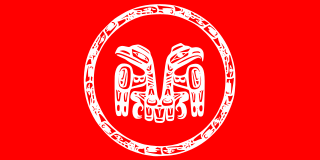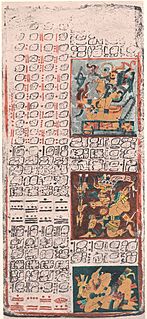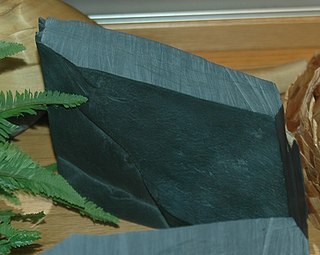Related Research Articles
Jargon is the specialized terminology associated with a particular field or area of activity. Jargon is normally employed in a particular communicative context and may not be well understood outside that context. The context is usually a particular occupation, but any ingroup can have jargon. The main trait that distinguishes jargon from the rest of a language is special vocabulary—including some words specific to it and often different senses or meanings of words, that outgroups would tend to take in another sense—therefore misunderstanding that communication attempt. Jargon is sometimes understood as a form of technical slang and then distinguished from the official terminology used in a particular field of activity.

Haida are an indigenous group who have traditionally occupied Haida Gwaii, an archipelago just off the coast of British Columbia, Canada, for at least 12,500 years.
The Haida are one of the indigenous peoples of the Pacific Northwest Coast of North America. Their national territories lie along the west coast of Canada and include parts of south east Alaska. Haida mythology is an indigenous religion that can be described as a nature religion, drawing on the natural world, seasonal patterns, events and objects for questions that the Haida pantheon provides explanations for. Haida mythology is also considered animistic for the breadth of the Haida pantheon in imbuing daily events with Sǥā'na qeda's.

Over a thousand indigenous languages are spoken by the Indigenous peoples of the Americas. These languages cannot all be demonstrated to be related to each other and are classified into a hundred or so language families, as well as a number of extinct languages that are unclassified because of a lack of data.
Chinook Jargon is a language originating as a pidgin trade language in the Pacific Northwest. It spread during the 19th century from the lower Columbia River, first to other areas in modern Oregon and Washington, then British Columbia and parts of Alaska, Northern California, Idaho and Montana while sometimes taking on characteristics of a creole language. It is partly descended from the Chinook language, upon which much of its vocabulary is based. Approximately 15 percent of its lexicon is French, and it also makes use of English loanwords and those of other language systems. Its entire written form is in the Duployan shorthand developed by French priest Émile Duployé.

Robert Bringhurst is a Canadian poet, typographer and author. He has translated substantial works from Haida and Navajo and from classical Greek and Arabic. He wrote The Elements of Typographic Style, a reference book of typefaces, glyphs and the visual and geometric arrangement of type. He was named an Officer of the Order of Canada in June 2013.

Haida Gwaii is an archipelago located between 55–125 km (34–78 mi) off the northern Pacific coast of Canada. The islands are separated from the mainland to the east by the shallow Hecate Strait. Queen Charlotte Sound lies to the south, with Vancouver Island beyond. To the north, the disputed Dixon Entrance separates Haida Gwaii from the Alexander Archipelago in the U.S. state of Alaska.

Na-Dene is a family of Native American languages that includes at least the Athabaskan languages, Eyak, and Tlingit languages. Haida was formerly included, but is now considered doubtful. By far the most widely spoken Na-Dene language today is Navajo.

Hecate Strait is a wide but shallow strait between Haida Gwaii and the mainland of British Columbia, Canada. It merges with Queen Charlotte Sound to the south and Dixon Entrance to the north. About 140 kilometres (87 mi) wide at its southern end, Hecate Strait narrows in the north to about 48 kilometres (30 mi). It is about 260 kilometres (160 mi) in length.
Masterfully-designed canoes of many sizes and forms were made on the Pacific Northwest coast of North America. They were the main form of transportation for the indigenous people of the area until long after European colonisation. In recent years, the craft of canoe-making has been revived, and a few have been built by a number of the native nations. Like those made in traditional times, they have proved eminently seaworthy.

This is a list of different language classification proposals developed for the indigenous languages of the Americas. The article is divided into North, Central, and South America sections; however, the classifications do not correspond to these divisions.

The K-class ferries are a group of similarly designed ferries operated by both BC Ferries and TransLink in British Columbia, Canada.

Haida is the language of the Haida people, spoken in the Haida Gwaii archipelago off the coast of Canada and on Prince of Wales Island in Alaska. An endangered language, Haida currently has 24 native speakers, though revitalization efforts are underway. At the time of the European arrival at Haida Gwaii in 1774, it is estimated that Haida speakers numbered about 15,000. Epidemics soon led to a drastic reduction in the Haida population, which became limited to three villages: Masset, Skidegate, and Hydaburg. Positive attitudes towards assimilation combined with the ban on speaking Haida in residential schools led to a sharp decline in the use of the Haida language among the Haida people, and today almost all ethnic Haida use English to communicate.

Milbanke Sound is a sound on the coast of the Canadian province of British Columbia.

Slatechuck Mountain, known as Kaagan in the Haida language, is a summit on south-central Graham Island in Haida Gwaii, formerly known as the Queen Charlotte Islands of the North Coast of British Columbia, Canada. It is located about 9 km west of Queen Charlotte City, on Skidegate Inlet, and just south of Yakoun Lake, the island's largest lake, which is the source of the northward-flowing Yakoun River.
Slatechuck Creek is a short but culturally important stream on Graham Island in the Queen Charlotte Islands of the North Coast of British Columbia, Canada. Only 6.7 km in length, it is located on the south flank of the small range including Slatechuck Mountain, to the north of which is Yakoun Lake, the headwaters of the Yakoun River. Its main left tributary, Kagan Creek, is named for Slatechuck Mountain, whose name in the Haida language is Kaagan.
Mednyj Aleut was a mixed language that was spoken on Bering Island.
The following is an alphabetical list of topics related to Indigenous peoples in Canada, comprising the First Nations, Inuit and Métis peoples.
Haida may refer to:
Nootka Jargon or Nootka Lingo was a pidginized form of the Wakashan language Nuučaan̓uł, used for trade purposes by the indigenous peoples of the Pacific Northwest Coast, when communicating with persons who did not share any common language. It was most notably in use during the late 18th and early 19th centuries and was likely one precursor to Chinook Wawa, in Chinook Wawa's post-contact-form. A small number of words from Nuučaan̓uł form an important portion of the lexical core of Chinook Wawa. This was true, both in Chinook Wawa's post-contact pidgin phase, and its latter creole form, and remains true in contemporary Chinuk Wawa language usage.